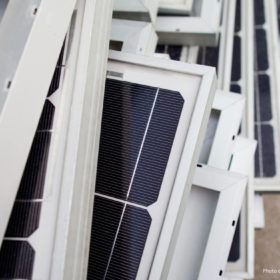Sinovoltaics shuffles PV module manufacturer financial stability ranking
The third edition of the Sinovoltaics financial stability report ranking lists India-based Abhishek Corp, Insolartion Energy, Waaree Renewable Technologies, and Solex Energy, all based in India, followed by U.S.-based First Solar as the top five. Six additional manufacturers entered the global ranking.
Perovskite-CIGS tandem solar cells have technical potential to achieve 26.69% efficiency
A Dutch and U.S. research team performed optical and electrical simulations to understand loss mechanisms in two terminal (2T) tandem cells based on perovskite and commercially available copper-indium-gallium-selenide (CIGS) cells, and subsequently established a roadmap to increase efficiency via four key modifications.
Chinese PV Industry Brief: China adds 102.48 GW of solar in H1
China’s National Energy Administration (NEA) says the country installed 102.48 GW of new solar capacity in the first half of 2024, bringing its total installed solar capacity to approximately 710 GW.
EneCoat to accelerate perovskite PV production
EneCoat Technologies, a Japanese solar perovskite developer, has raised JPY 5.5 billion ($35 million) from new and existing investors to finance new collaborations based on its low-temperature production process.
Sunswap rolling out PV-powered transport refrigeration
The U.K.-based technology company has launched Endurance, an electric transport refrigeration system with integrated battery and solar PV. It is built to compete with diesel-powered systems.
All indoor PV technologies at a glance
A review of indoor PV cell technologies by an international research team delves into recent progress, characterization, and design strategies used to develop highly efficient cells. The study presents 250 commercial and laboratory devices, as well as applications and performance reporting.
New fault detection techniques for air-to-air heat pumps
Portuguese researchers have compared several applied machine learning techniques to detect faults in air-to-air heat pumps in cooling mode. The results showed a high level of performance based on four metrics.
Chinese PV Industry Brief: Longi to mass-produce back contact solar cells
Longi has announced plans to produce its new hybrid passivated back contact (HPBC) 2.0 solar cells at a 12.5 GW facility in Xixian New Area, Shaanxi province.
IEA-PVPS identifies 456 patents in PV module recycling
The IEA Photovoltaic Power Systems Programme’s (IEA-PVPS) latest report on solar panel recycling offers a comprehensive review of all existing technologies in this market segment, from pure mechanical recycling to innovative techniques such as as light pulse treatment, water-jet cleaning, pyrolysis, and chemical treatments.
Woodburn Capital, Magna Exteriors sign 15-year solar PPA in Czechia
Magna Exteriors and Woodburn Capital Partners have signed a 15-year solar power purchase agreement (PPA) in Czechia. The agreement covers energy generated on-site at a 2.4 MW solar plant located at Magna Exteriors’ site in the northwestern part of the country.










